
An exclusive interview with Christopher Hector
If you are a regular visitor to The Horse website, then you will remember the interview with Bert Rutten that I recorded at last year’s KWPN Stallion show. The story went viral, and it was no surpise, Bert’s knowledge and insight into the world of dressage and dressage breeding are amazing, and his ability to express his views is equally impressive. I caught up with Bert in Aachen, just before the 2023 CHIO to record this interview, it is one of the best…
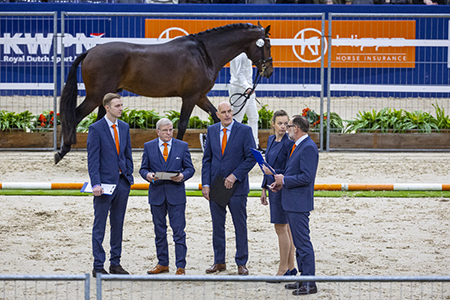 You are stepping down as Chairman of the KWPN stallion commission, we will miss you at the press conferences…
You are stepping down as Chairman of the KWPN stallion commission, we will miss you at the press conferences…
“I’ve done it for seven years now, and my life has changed quite a lot in the last two years, after I sold my farm, and you have to make choices. I thought seven years is a nice time, and time for somebody else to take over.”
At a time when in Holland it was jumping, jumping and more jumping, what possessed your father to become a dressage rider?
“The story goes, that after he got married, he didn’t have the money to have horses anymore, then he built up the company, and it was getting better and he went with friends to Aachen. They watched the dressage, they were all old mates from the riding club, and the story goes, he was watching the Grand Prix of Aachen and he said, I can do that as well.”
“But he still didn’t have a horse, so the next year, he went to the stallion show and bought himself a horse, and four or five years later he was riding in Montreal. It was his third Grand Prix in his life.”
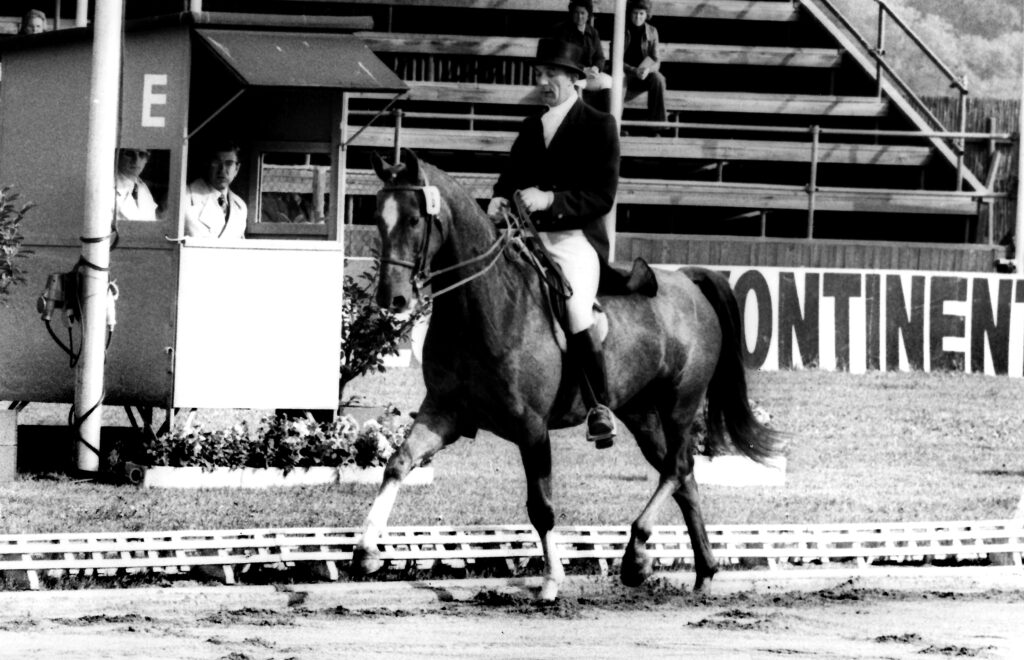
Jo Rutten and Banjo, they were 9th individually and in the 7th placed Dutch team at the 1976 Montreal Games… (photo – Jacob Melissen)
Where did he get his dressage knowledge?
“He was trained by Ernest van Loon, before he did jumping and eventing and then his trainer was Will Hendrix. For the rest, he was pretty much self-made.”
What school was van Loon drawing on?
“Without tension, everything without tension. He was without spurs, very light in the hands, and the horse must always have the will to go forward and downward. One of his theories – and I repeat it today with my students – was, when I bring my hands forward, the horse has to stay where he is, then I have self-carriage. No matter what level of training you are at, when I push, the horse must have the desire to get longer and forward, downward, the desire, by the weight of the contact.”
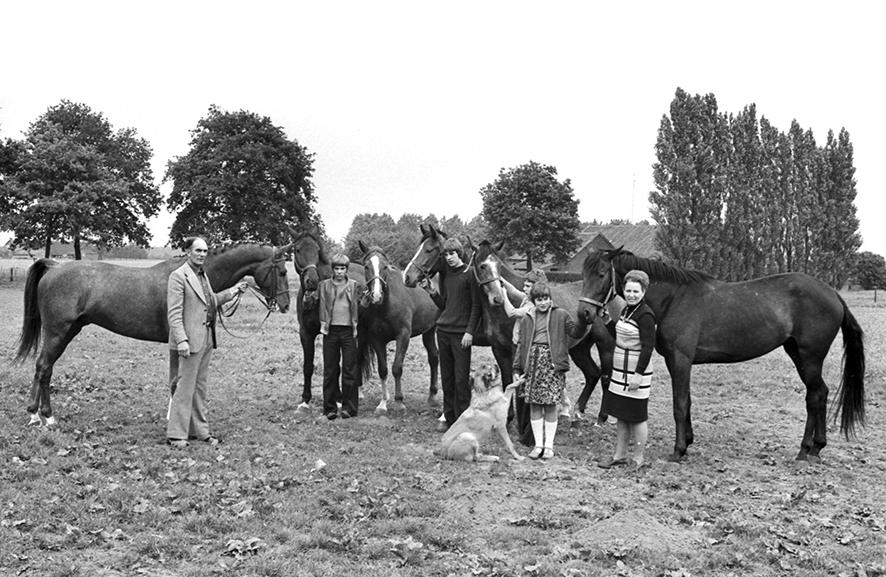
Jo Rutten and his family in 1975 (photo – Jacob Melissen)
At first you might say he was before his time, but no, the old riders knew those things…
“Of course, there has always been the controversy between really onto the bit and into the contact, and the ones who were preaching light, on their own feet, and no weight into your hand. That’s as old as the streets of Rome.”
But that can run down another blind alley, the people who are too sensitive to compete, who ride their perfect Grand Prix movements in front to their mirrors at home…
“When they are perfect, they can compete!”
But they don’t do they… and then there’s the French School that talks a lot about lightness but French dressage has not been much of a force since Baucher…
“Not at the moment. I think it is up to the FEI and up to the judges to uphold the rules as described in the FEI rule book, and that also says with a light contact. How light is a light contact? And how do you define contact? I think van Loon really defined it, the horse must have the will to follow the bit, then you have contact as the horse always has the will to follow the bit. You have contact, is that one kilo in your hand or just the weight of the rein, but from the moment the horse wants to follow the bit, you have contact.”
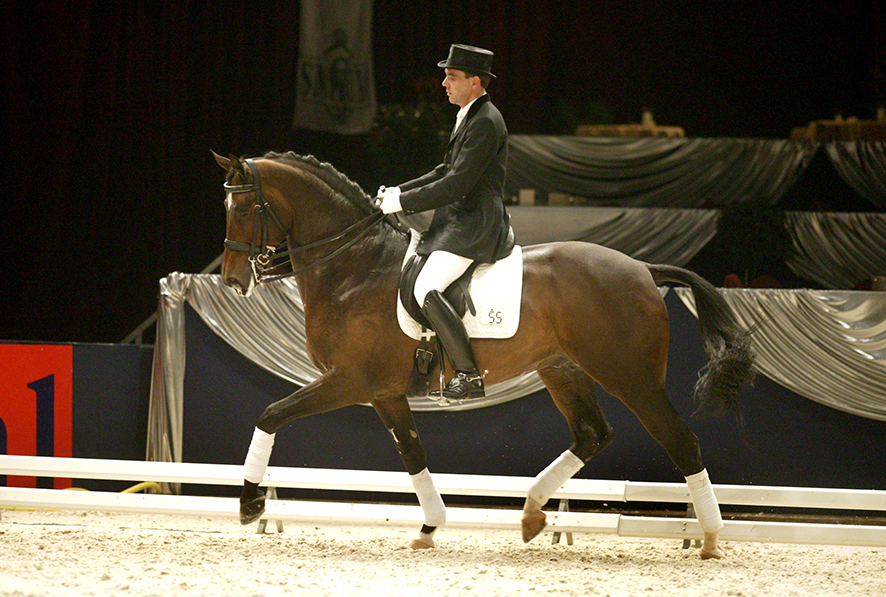
Bert and his Grand Prix stallion, Paganini (one of thirteen Grand Prix competitors trained by Bert – like the contact? (photo – Jacob Melissen)
It must have been fairly distressing for you then, the era of Sjef Janssen…
“Not really, I always went my own way and that was it. But there again, we start to bash people and I think we have to talk about the medieval system of judging. What Sjef did was rewarded, how can you say he did something wrong?”
They gave Gold after Gold after Gold, but you talk to those same judges now and they say, ‘oh I hated it all’…
“The criticism came out of the dressage scene itself, and that criticism in my opinion, came mostly for personal gain. Bash someone who is successful and maybe they quit and there is room for somebody else. But there again it is up to the judges, they are the gate-keepers of classical dressage. When they don’t do their job right, who is there to blame?”
I was one of the critics and I had nothing to gain, it just wasn’t pleasant watching Salinero do a test…
“Whatever opinion you have about it, it was rewarded.”
But it wasn’t nice, it wasn’t dressage…
“It was rewarded. Don’t talk about Salinero, don’t bash people, talk about the system, the system is medieval the only difference is that people submit themselves out of their own freewill and you can’t even appeal against what judges are doing. Now it’s seven judges, more of the same, we have supervising judges, the butcher looking at his own meat, that’s more of the same, and nobody is held accountable for what he is doing. Then you have seven judges and one judge is off, who says that one judge is wrong? Galileo also had a different opinion from the mainstream.”
I think it was at the Herning Euros, and the Swedish judges said that the grey British horse was lame in the passage – he never judged again – but he was right…
“I don’t know that incident but the point is, you can’t say someone who is off, is wrong, sometimes they are, maybe mostly they are, but it’s pretty weird that basically the mainstream thinking is, he’s off, so he’s wrong.”
Do you think it started when the judges lost leadership, in the past someone like Eric Lette had a view and he could pull the judges together as a team, more recently we had Stephen Clarke who didn’t have that strength of his view and it started to fall apart…
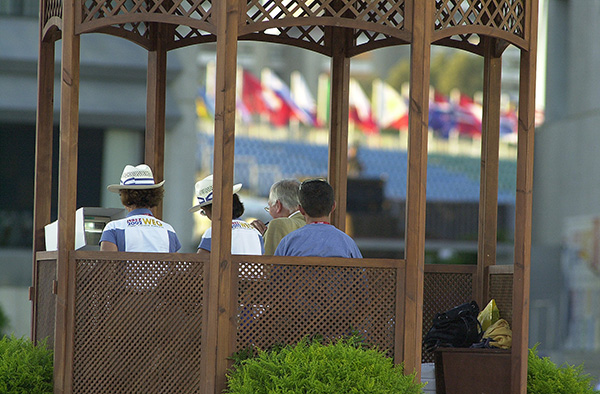
“I still think it is the judging system, because these judges are in competition with each other, they don’t want to be that one person that’s off.”
They want to be invited to the next show…
“That’s a big thing with the FEI, it’s basically a dictatorial regime, you don’t have any choice, it’s the FEI, but the organizers can choose the judges, for Olympics, and Europeans and so on, they invite, but for the rest of the shows it is the organizing committee, they invite judges. And I don’t say it is all political, but it isn’t right. It’s not open, it’s not fair – when you talk about the sport of dressage, it’s not sport, it’s art. It still gives me goosebumps when it is done right, but sport means ‘fair game’ and it’s not a fair game. Riders that don’t want to compete here at Aachen because a certain rider will be there, and I don’t want to meet him before the Olympic Games. What’s the reason for that? Because judges are biased, not out of ill-will, it’s unconscious. If you or I are going to sit there we are going to make the same mistakes, so many people have tried it. You can’t tell me, all judges are doing it wrong, they are all trying their best and we should be thankful that they sit there, basically for no money, and at a lot of shows they are treated badly.”
“It’s not the judges, it’s the system.”
But isn’t the problem that the people we would like to see sitting in the judges box, the people who have competed, real horsemen and women, they have so many students and allegiances that they don’t want to judge, so what we get are people who are rich enough to go to all these shows, but not necessarily people with the background and horsemanship we need…
“Even when you would take the people with the background and the horsemanship, I’m convinced that won’t change anything.”
Nothing?
“Because when you are a judge, the whole world is watching you and you don’t want to be that judge that is totally off, so more-or-less you start to judge what you hope the other judges see. That’s a human thing, it’s the system that ain’t right.”
“There are a lot of examples, and most discussion starts with the placings three, four, five and six, but those riders also have the right to be judged in a fair way. Also the number 20 and 25, have the right to be judged in a fair and transparent way.”
“Look at ice skating and gymnastics, they have evolved in their way of judging. One judge for one particular movement, one particular part of the test. Dressage hasn’t tried, a few years ago for a couple of days, but then they say the riders don’t want a change, but that is also the system, of course they don’t want change because they know this system and don’t know how change would work. They know how to play this system, especially the very successful one who have been in the game a long time. But it is wrong for dressage.”
So what would you do if you were suddenly made dictator of the FEI and you could do whatever you like?
“I would experiment with one judge judging one part of the test and then for the championships and really important shows, I would have a system when the judges are in doubt, that they could look back at a video, because they have the time since there is only one judge judging that particular part, which is rotating all the time so they don’t judge the same movement at every show. I would go for professional judges on the payroll of the FEI. And they are not allowed to teach, not allowed to deal, that would be the first thing.”
“We are a very professional sport but our judges aren’t. Still we have to be thankful that they want to do it, but they should be professionals in a professional sport, where so much money, so much time, so much emotion, is involved, there should be a professional judging team, especially for the championships and the really important shows. And they would give the example for the lower levels, and to all the countries.”
“And they have to be consistent. Today we have a horse that is very spectacular, so all the horses have to be spectacular. Tomorrow we have a horse that is really light and really even, and that’s what we want. We have seen the changes over the years, it goes from left to right.”
When you say one judge should judge one part of the test, would that mean one judge for all the trot work, one all the canter…
“It’s something you have to experiment with, I don’t have immediately the right answer. We have to look at other sports, how do they do it. And make sure you have a system where a rider can appeal against wrong judging, in the same way that the judge can defend himself in that system.”
“It’s not he said, she said, let’s take an example, going behind the vertical, perfect piaffe but the horse is too short, and behind the vertical, you have to take off so many marks, and it doesn’t matter which rider it is, the judge has to take off the marks from the perfect ten. But what you see now is that some riders are judged from zero to ten, and the middle group is judged from seven to ten, that’s a huge difference, sounds the same but it aint.”
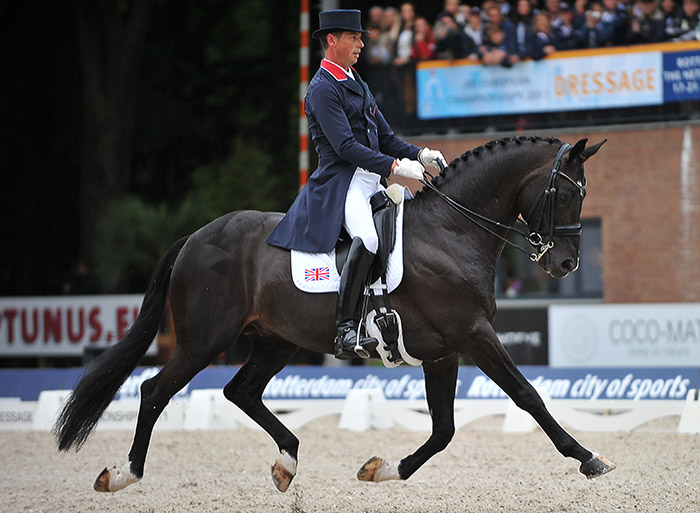
Carl and Uthopia – light is right…
I thought there was a big difference after the Euros in Rotterdam where Carl was first, and Charlotte second, and suddenly there was the emphasis was on harmony and lightness…
“Absolutely there is change.”
But do you think it is starting to swing back now?
“It swings all the time, I’ve been in the game a fairly long time now, and it keeps swinging, and that’s because of the system. Not the judges, not the riders, the system. If you are a rider and you are in front, you are not going to criticize the system because that’s how it works. The ones who do criticise and are still active in the sport, then it’s sour grapes and not taken seriously. It stays in a vicious circle where they don’t speak out.”
“I think the FEI should take their role and be a good parent for everybody, and make changes. Then this whole debate about what’s right and what’s wrong, would be over.”
What I find distressing, is the indications of tension, the most obvious is the swishing tail, and yet I see horses starting to win with an agitated tail. If you were judging and the horse’s tail was going the whole time, would you be marking that down?
“I wouldn’t be judging in this system because then I would make the same mistake. When it’s truly spectacular, what are you going to do, with the whole world watching you, are you going to mark them down, yeah you can do that once and they don’t ask you any more, what’s the point.”
“But when the FEI says you have to take off so many points for a swishing tail, then it is clear for everybody.”
Do you like watching tests with agitated tails?
“No, but not every swishing tail is from tension, it’s the same with a horse that sometimes opens the mouth, it is not always tension. You have to watch the whole picture, you can’t say swishing the tail means the horse is tense. Occasionally the horse swishes the tail, it does that in the stable, it does that in the field, but it is easy to recognize tension.”
It’s a different sort of tail swishing…
“A different sort, but it should be transparent, what to take off., and that should be for every one.”
That would be very interesting…
“But don’t you think in a modern world, it should be transparent, and yes they give the marks out, you can see the marks and you can see that even though they try to give all the same marks, they differ like you wouldn’t believe, especially at the shows where they don’t know everybody, then they get completely confused.
Of course you see a lot of tests that are of equal quality, then it is really difficult, one judge has 66, one has 68, and the riders complain already. But when it is all that close, then it is difficult, but it doesn’t take away my criticism of the system of judging. And I don’t blame them, they teach, they deal, judges have conflicts of interest all over the world.”
“They should be professionals, especially at the top shows.”
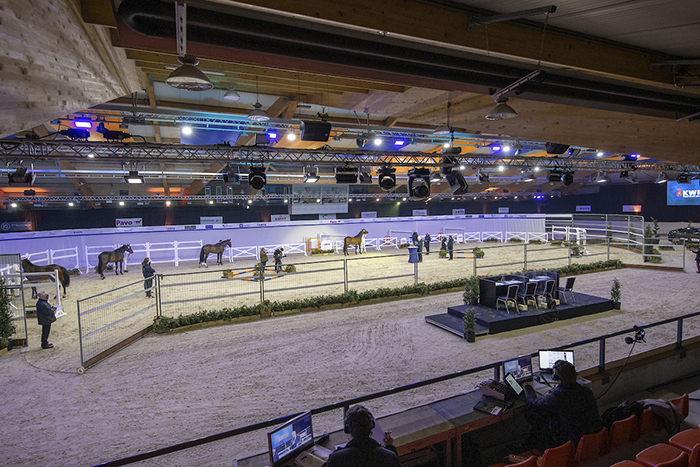
Can we go back to your role as the head of the stallion commission, we’ve been talking a lot over the last couple of days about the issue of shivers, and more and more it seems to me that this is a more serious issue than WFFS ever was. But no-body wants to talk about shivers, but I listen to people who sell a lot of horses, and if that horse develops shivers that hurts because they have to give the money back, and they say the major sources of shivers are Weltmeyer and Jazz…
“When somebody shouts something like that, give me the scientific proof of that. It’s easily said, easy to bash a stallion but is that so?”
That hasn’t been your experience?
“No.”
It was easy with WFFS, you could just take a blood test and yes, no, the horse is positive, but there is no test – yet – to see if a stallion is a likely cause of shivers. It’s mainly because we’ve done so little research because no-one wants to know about it…
“In the future you can detect it with DNA, I am almost sure that if we live long enough, we’ll see that, but at the moment I don’t have any proof one way or the other that any stallion produces more shiverers.”
You don’t see a line from Jazz to Don Juan to Don Martillo?
“But of course, I don’t deal so many horses, but I don’t have any proof that would establish that line. What’s the reason for shivers, is there one reason, or multiple reasons?”
That’s the problem, we have in our bus that has been travelling around on our way to Aachen, one lady she had a racehorse, and raced it three seasons with shivers, and only stopped racing the horse when it became impossible to shoe, but we have another woman on the bus, she imported a mare from Germany to New Zealand, very expensive, and now she is going to have to shoot it because it produces foals with shivers. That’s one of the problems, it’s so random.
“And we don’t know enough about it, at least I don’t know enough about it.”
You don’t come across the problem with your clients, with your horses?
“Of course we have that problem as well but we have to deal with it.”
But we are not dealing with it, if we ignore it…
“How do you want to deal with it? If a stallion has it at the 70 day testing, he goes out. Okay when he gets it when he is eleven years old, what can you do? Unless you can prove it, like you can with WFFS, what do you do?”
When someone who deals a lot of horses tells me that 50% of the progeny that they have bought, by a particular stallion, have developed shivers, that’s not significant?
“Every disease in horses that you encounter, you have to take seriously, but how serious is it as long as there is no scientific research and proof. It’s the same for example with kissing spines. How many horses have kissing spines, how many suffer problems from that kissing spine? We know a bit, but we don’t know the whole story yet. It’s easy to shout something.”
It’s not easy to shout in this case, because the people who have talked about this immediately say, this is off the record. It’s not easy to shout, that’s the problem because it’s dangerous to shout about it, because there are a lot of vested interests in keeping quiet about it…
“We know the problem of shivers, that’s for sure, but can you say it’s one line more than the other, no. Not proven. You can have a feeling, that’s all.”
Look back at the issue of OCD, and there was a time when people were saying, oh it’s all because you are feeding the horse the wrong diet, finally it was proven it was hereditary with the KWPN in the lead on this issue and stallions were tested and rated, and the problem is now under control…
“I think the hereditary factor is something like 0.27, the rest is basically surroundings, but the foal must have the gene too. You can do a lot with the environment, and now you can select stallions that bring the rate down, so OCD is under control, I think the KWPN has done a really good job with the x-rays, but if a stallion is clean and sound, it does not mean he is not producing OCD. The other way around, that he has OCD does not mean he produces more offspring with OCD than the general population.”
While we are on health issues, did WFFS justify the hysteria that was generated around the issue?
“I had two stallions that had it, and I have never seen a foal that suffered from it, and not many of my colleagues have seen it either, and lots of vets have never seen it. Maybe these foals are aborted before the foal is fully developed. Then again, I have no proof, I am shouting something I can’t prove, but that is my gut feeling.”
The Hanoverian Verband looked at the foal record of stallions they knew had it, like Don Frederico, and they didn’t find a big difference from stallions without the gene, one scientific study found the difference was only 3%, not a big number…
“That’s because only 25% actually get it. But now we know that gene exists, if you have a mare with the WFFS gene, breed with it, but please choose a negative stallion, and nowadays there are so many stallions to choose from, that are free of WFFS, with quality. I don’t say, don’t use a stallion that has it, but if I was still a breeder, I wouldn’t.”
You wouldn’t have bred to Apache, I thought he was a super horse…
“No, but then I had my own stallion, Havanna, castrated straight away because he was positive.”
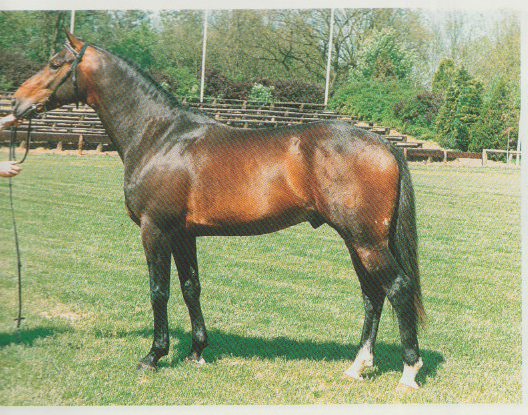
Havanna, gelded because he was WFFS positive! (photo – Jacob Melissen)
Can we talk a little about Ferro and Jazz. In your seven years on the Commission, you have seen the dynasties of these two great stallions… What did Ferro bring to the breed?
“Really strong hind leg, good canter.”
“Jazz made pretty horses with a lot of scope, and big trot.”
But perhaps Ferro has been more successful as a stallion maker?
“I don’t have the figures for how many they made, but they were both pretty successful, but they also were used a lot by the breeders, and they also got the better mares, so it’s a little of a self-fulfilling prophecy when they are used a lot with the top mares then you get better offspring, but a lot of stallions in the age of Jazz and Ferro, they didn’t get the chance, so now we will never know how successful they might have been.”
More and more we see young stallions being used over large numbers of mares, then next season that stallion disappears…
“I am convinced that in the years to come, mare owners will go more and more to stallions that have competed and performed at Grand Prix level. It’s like that in jumping, and I know it’s like Utopia, but my ideal would be the mare and the stallion at Grand Prix level. When you want to breed for the highest level that would be, the ideal world.”
But so many people are breeding for the next foal auction…
“I am convinced that even for the foal auctions, in the future, that like in jumping, at least the father must have performed. And in jumping, it is not only the stallion, it is also the mare, they are both performers for the ones that bring a lot of money, because as a foal you pay for the gene pool. It will get more and more important, also for the dressage breeders to select a Grand Prix stallion, and really test their mares.”
“In Holland we make a big leap forward by testing the mares in the IBOP, then you know at least the mare is rideable, but one step further would be the mare goes Grand Prix and then you can see she has a talent for piaffe / passage, for the collected work, for the pirouettes, that it comes easy for her, and that in combination with the right stallion, who has also performed, I think we can make a big leap forward.”
And your great leap forward, you are going to be concentrating more on teaching?
“In the mornings I still want to ride two horses for pleasure and train them a bit, I have one four-year-old, one eleven-yea- old, then I teach.”
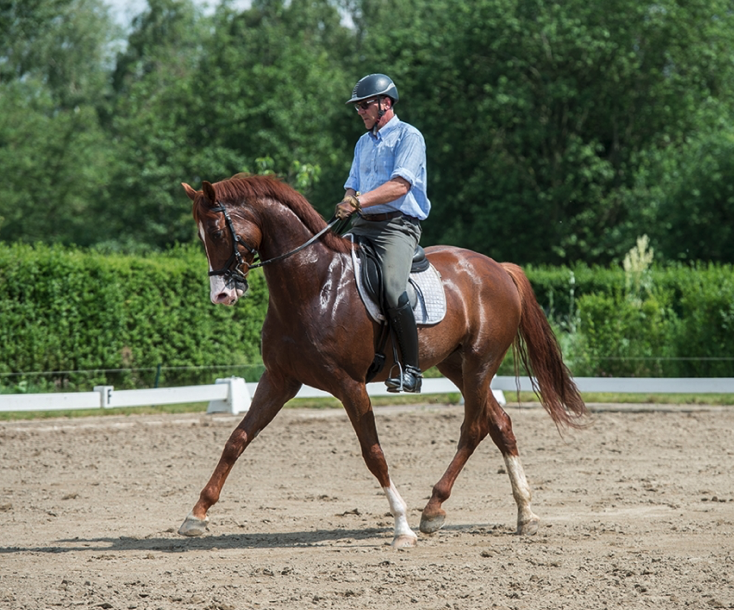
And people come to you to train?
“From Spain, Italy and England, they come to my place, from Belgium and Holland. Riding is still my passion.”
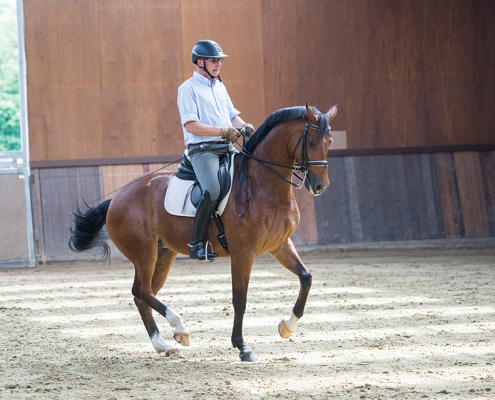



A brilliant interview with Bert Rotten.
Thank you
I wish I had known him. I have known all the others you interview, but not him.
He makes absolute sense,. He speaks the truth and his criticisms are very interesting. I agree with them, it is food for thought.